 Copyright Skyhorse Publishing 2019 Copyright claimed in the index and conversion charts. Source: U.S. Department of Agriculture. First Skyhorse Publishing edition 2019. All rights to any and all materials in copyright owned by the publisher are strictly reserved by the publisher. All inquiries should be addressed to Skyhorse Publishing, 307 West 36th Street, 11th Floor, New York, NY 10018.
Copyright Skyhorse Publishing 2019 Copyright claimed in the index and conversion charts. Source: U.S. Department of Agriculture. First Skyhorse Publishing edition 2019. All rights to any and all materials in copyright owned by the publisher are strictly reserved by the publisher. All inquiries should be addressed to Skyhorse Publishing, 307 West 36th Street, 11th Floor, New York, NY 10018.
Skyhorse Publishing books may be purchased in bulk at special discounts for sales promotion, corporate gifts, fund-raising, or educational purposes. Special editions can also be created to specifications. For details, contact the Special Sales Department, Skyhorse Publishing, 307 West 36th Street, 11th Floor, New York, NY 10018 or . Skyhorse and Skyhorse Publishing are registered trademarks of Skyhorse Publishing, Inc., a Delaware corporation. Visit our website at www.skyhorsepublishing.com. 10 9 8 7 6 5 4 3 2 1 Library of Congress Cataloging-in-Publication Data is available on file.
Print ISBN: 978-1-5107-5074-6 eBook: 978-1-5107-5079-1 Cover design by Daniel Brount Printed in China
Table of Contents

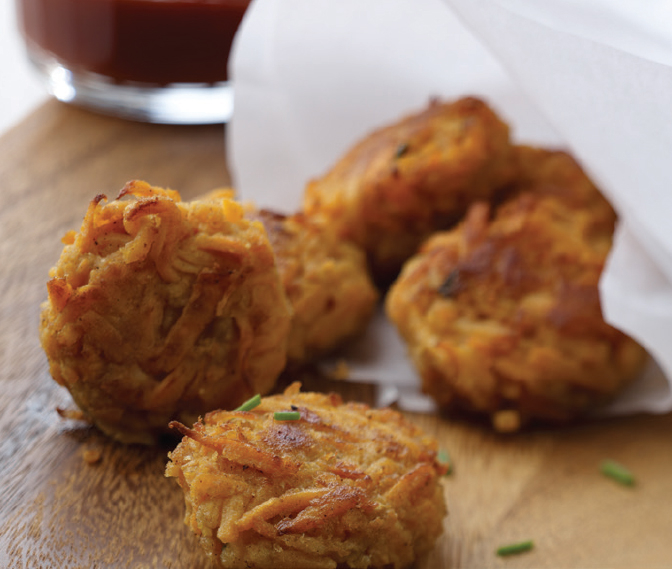
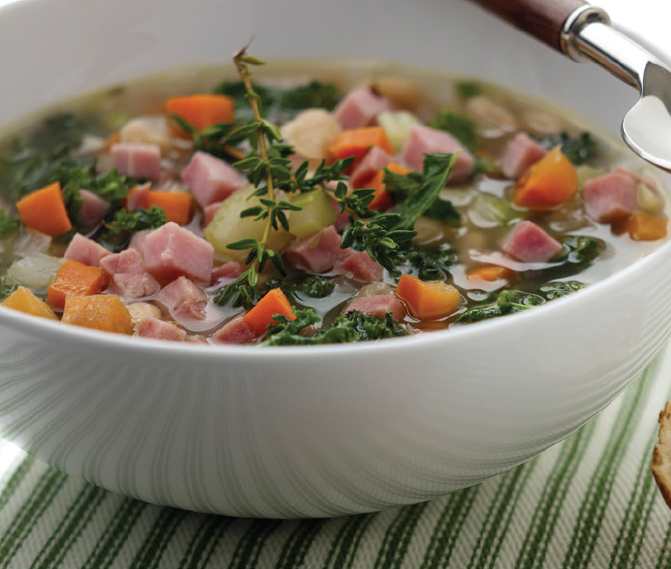
Recipes for Healthy Kids Competition Acknowledgement Page
The United States Department of Agriculture (USDA), Food and Nutrition Service (FNS) would like to thank the following people and organizations for their support of the
Recipes for Healthy Kids Competition. The
Recipes for Healthy Kids Competition provided the perfect opportunity for school nutrition professionals, students, parents, chefs, and community members to cook up some new ideas and get children excited about making healthy choices. We want to thank all of the
Recipes for Healthy Kids teams that participated in the competition. The teams submitted over 340 recipes for this contest.
United States Department of Agriculture
Food and Nutrition Service, USDAProject Lead Ann Hall, MRE, RD, LDN
Project Team Eileen Ferruggiaro, PhD, RD Tim Vazquez, RD Heidi Bishop Sonya Barnes, MS, RD Sheldon Gordon, MS, RD Mydina Thabet, MS, RD, LDN Ebony S.
Judges Katie Wilson, PhD, SNS Helen E.
Judges Katie Wilson, PhD, SNS Helen E.
Phillips, SNS Karen M. Green
American Culinary Federation (ACF)

One of their many roles includes serving as the official representative for the Chef & Child Foundation, founded in 1989, to educate children and families in understanding proper nutrition and serving as the voice of the culinary industry in its fight against childhood hunger, malnutrition, and obesity.
ACF National President Michael Ty, CEC, AAC
ACF Government Relations Committee Chair Damian Martineau, AAC
Judges Shawn L. Hanlin, CEC Rene J. Marquis, CEC, CCE, PCEC, CCA, AAC Roland E. Schaeffer, CEC, AAC, HOF Randy J.
Torres, CEC David J. Turcotte, CEC, AAC ACF Staff Heidi Cramb Kevin Brune Patricia A. Carroll Tracy Smith Michelle Whitfield, MHA
Roniece Weaver & Associates, Inc. (RWA)
RWA is an Orlando-based consulting nutrition practice, headed by Roniece Weaver, MS, RD, LD. The focus is on integrating food, wellness, and innovative cooking strategies. RWA was responsible for testing, evaluation, and recipe standardization.
Hebni Nutrition Consultants Glen R. Providence Larry Walker Don Carlock Bridget Monroe Yolanda Daniels Keon Johnson Anthony McCastler Fabiola Gaines Candace Weaver Gloria Jolly Ellareetha Carson Rojean Williams Charles Daniels Dr. Maurice Woodard Holly Graphics Design and layout by Byron Holly Mark Taulbee Photography Photographs
Food Safety Advice
Clean: Wash Hands and Surfaces Often
Bacteria can be spread throughout the kitchen and get onto hands, cutting boards, utensils, counter tops, and food. Wash your hands with warm water and soap for at least 20 seconds before and after handling food and after using the bathroom or changing diapers. Wash your cutting boards, dishes, utensils, and counter tops with hot soapy water, or prepare your sanitizer according to the manufacturers instructions, before you go on to the next food. Consider using paper towels to clean up kitchen surfaces.
If you use cloth towels wash them often in the hot cycle of your washing machine. Rinse fresh fruits and vegetables under running tap water, including those with skins and rinds that are not eaten. Rub firm-skinned fruits and vegetables under running tap water or scrub with a clean vegetable brush while rinsing with running tap water. Keep books, backpacks, or shopping bags off the kitchen table or counters where food is prepared or served.
Separate: Dont Cross Contaminate
Cross-contamination is how bacteria can be spread. When handling raw meat, poultry, seafood, and eggs, keep these foods and their juices away from ready-to-eat foods.
Separate raw meat, poultry, seafood, and eggs from other foods in your grocery shopping cart, grocery bags, and in your refrigerator. Use one cutting board for fresh produce and a separate one for raw meat, poultry, and seafood. Never place cooked food on a plate that previously held raw meat, poultry, seafood, or eggs.
Cook: Cook to Proper Temperatures
Food is safely cooked when it reaches a high enough internal temperature to kill the harmful bacteria that cause foodborne illness. Use a food thermometer to measure the internal temperature of cooked foods. Use a food thermometer, which measures the internal temperature of cooked meat, poultry, and egg dishes, to make sure that the food is cooked to a safe internal temperature.
Make sure there are no cold spots in food (where bacteria can survive) when cooking in a microwave oven. For best results, cover food, stir, and rotate for even cooking. If there is no turntable, rotate the dish by hand once or twice during cooking. Use microwave-safe cookware and plastic wrap when cooking foods in a microwave oven. 
Chill: Refrigerate Promptly!
Refrigerate foods quickly because cold temperatures slow the growth of harmful bacteria. Do not over-stuff the refrigerator.
Cold air must circulate to help keep food safe. Keeping a constant refrigerator temperature of 40 F or below is one of the most effective ways to reduce the risk of foodborne illness. Use an appliance thermometer to be sure the temperature is consistently 40 F or below. The freezer temperature should be 0 F or below. Refrigerate or freeze meat, poultry, eggs, and other perishables as soon as you get them home from the store. Never let raw meat, poultry, eggs, cooked food, or cut fresh fruits or vegetables sit at room temperature more than two hours before putting them in the refrigerator or freezer (one hour when the temperature is above 90 F).
There are three safe ways to defrost food: in the refrigerator, in cold water, and in the microwave using the defrost setting. Food thawed in cold water or in the microwave should be cooked immediately. Always marinate food in the refrigerator. Use or discard refrigerated food on a regular basis.
Next page
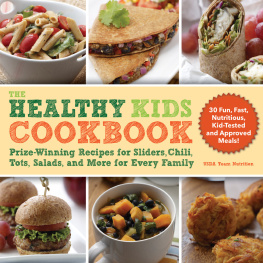

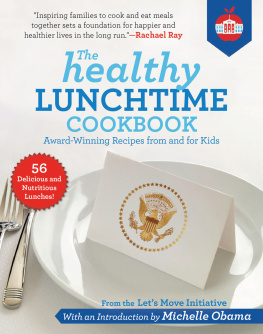
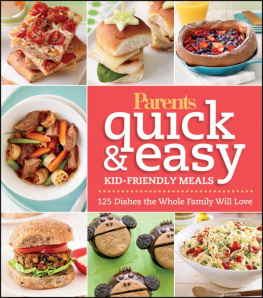


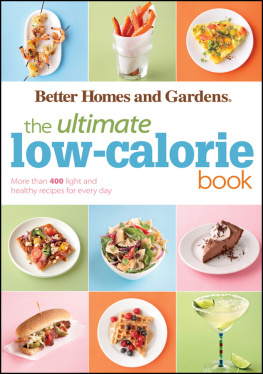
 Copyright Skyhorse Publishing 2019 Copyright claimed in the index and conversion charts. Source: U.S. Department of Agriculture. First Skyhorse Publishing edition 2019. All rights to any and all materials in copyright owned by the publisher are strictly reserved by the publisher. All inquiries should be addressed to Skyhorse Publishing, 307 West 36th Street, 11th Floor, New York, NY 10018.
Copyright Skyhorse Publishing 2019 Copyright claimed in the index and conversion charts. Source: U.S. Department of Agriculture. First Skyhorse Publishing edition 2019. All rights to any and all materials in copyright owned by the publisher are strictly reserved by the publisher. All inquiries should be addressed to Skyhorse Publishing, 307 West 36th Street, 11th Floor, New York, NY 10018.


 One of their many roles includes serving as the official representative for the Chef & Child Foundation, founded in 1989, to educate children and families in understanding proper nutrition and serving as the voice of the culinary industry in its fight against childhood hunger, malnutrition, and obesity. ACF National President Michael Ty, CEC, AAC ACF Government Relations Committee Chair Damian Martineau, AAC Judges Shawn L. Hanlin, CEC Rene J. Marquis, CEC, CCE, PCEC, CCA, AAC Roland E. Schaeffer, CEC, AAC, HOF Randy J.
One of their many roles includes serving as the official representative for the Chef & Child Foundation, founded in 1989, to educate children and families in understanding proper nutrition and serving as the voice of the culinary industry in its fight against childhood hunger, malnutrition, and obesity. ACF National President Michael Ty, CEC, AAC ACF Government Relations Committee Chair Damian Martineau, AAC Judges Shawn L. Hanlin, CEC Rene J. Marquis, CEC, CCE, PCEC, CCA, AAC Roland E. Schaeffer, CEC, AAC, HOF Randy J. 